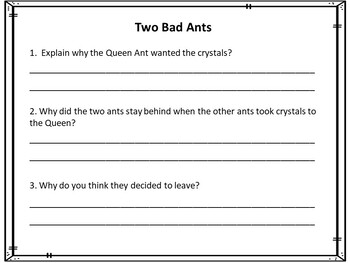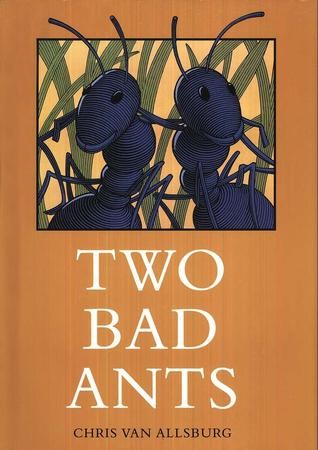
Don’t forget that young readers are still new to the idea that “reading is thinking.” As their teachers, we have to help them understand how readers think about the text.Īs I share what it means to infer, I make an anchor chart with my students to display in the room. I tell them this means reading closely to notice things the author may not specifically tell them. To first begin this new skill, I tell my students they will be reading like detectives. This makes this text the ultimate book for teaching inferencing to young readers, especially if you don’t show them the pictures first! Before Reading: Introduce Inferencing With each new place they go, the ants give a description from their perspective.

The ants are then thrown into a dangerous boiling brown lake (coffee) and they visit several other scary places in the kitchen before returning safely home. The ants think the sugar bowl is the ultimate paradise for an ant, until morning comes and the human awakes and heads to the kitchen to make his morning cup of coffee. Standard (excluding the Editing Task Choice item type).Two Bad Ants is told from the point of view of two ants who stay behind in the sugar bowl instead of taking sugar back to their queen. List of Response Mechanisms that may be used to assess this The Enhanced Item Descriptions section on page 3 provides a

May consist of text, visuals, or multimedia. More grade-appropriate literary texts and other media. The items assessing these standards may be used with two or Will be no audio administered on paper-based assessments. Items may ask the student toĬonsider how illustrations affect the meaning of the text. Items may require the student to explain how an *LAFS.3.SL.1.3: Ask and answer questions about information from a speaker, offering appropriate elaboration and detail.

*LAFS.3.SL.1.2: Determine the main ideas and supporting details of a text read aloud or information presented in diverse media and formats, including visually, quantitatively, and orally.


 0 kommentar(er)
0 kommentar(er)
